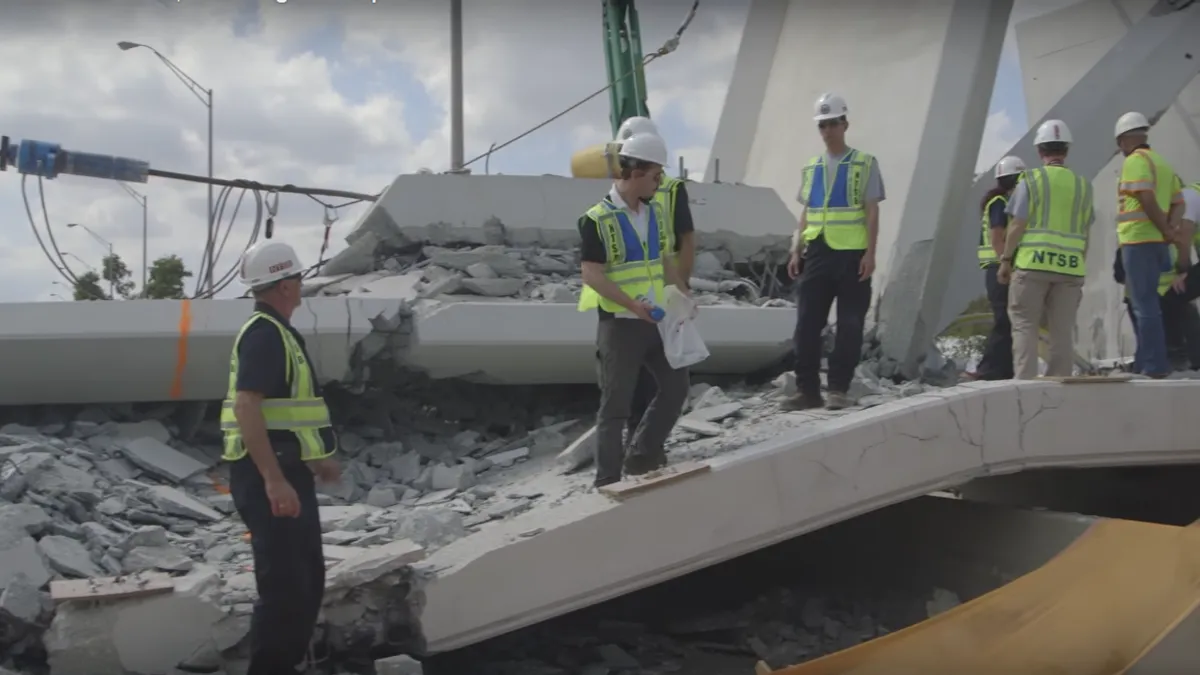Dive Brief:
- The Occupational Safety and Health Administration has cited five contractors who had been working on the Florida International University pedestrian bridge that collapsed March 15, killing five motorists and one worker and injuring five others. The agency has also proposed fines totaling $86,658 for the group of companies.
- OSHA issued Figg Bridge Engineers and engineering and inspection firm Network Engineering Services one serious violation each and proposed that each firm be fined $12,934 for exposing employees to physical danger by not removing them from the bridge area when cracks were observed. The agency proposed fines of $25,868 for both post-tensioning specialty contractor Structural Technologies and general contractor Munilla Construction Management and cited both companies with two serious violations each for failing to provide adequate personal fall arrest systems. Finally, OSHA issued concrete formwork contractor The Structural Group of South Florida one serious violation and a proposed fine of $9,054 for also failing to provide an adequate personal fall arrest system. The worker who died, Navaro Brown, worked for Structural Technologies.
- "Collectively," said Kurt A. Petermeyer, OSHA regional administrator, "these employers failed to take appropriate action and provide the necessary protections to their employees while they were working on the bridge on the day it collapsed." All five companies have 15 days from the receipt of the citations and notice of proposed penalties to protest, request an informal hearing or comply.
Dive Insight:
OSHA is the first agency to try to hold FIU contractors working on the bridge that day responsible for workers' injuries and Brown's death. The National Transportation Board is still investigating the accident, though it seems that OSHA might have taken into consideration the photos in the board's last report when making its decision to cite Munilla, Figg and others.
In August, the NTSB issued the second of two investigation updates. The report included photos of what looks like major cracks near the reported areas of failure, but the agency has declined, thus far, to point the finger at an official cause or at any company involved in the bridge's construction.
A Florida DOT voicemail transcript of a message left by a project engineer working for Figg indicated that those on the bridge team knew about the cracks before its installation, which was performed according to accelerated bridge construction methods. It's worth noting that while offsite bridge construction followed by a short installation period is generally considered to be just as safe as traditional onsite construction, the major cracks reportedly did not appear until after crews transported the FIU bridge structure to the site.
However, ABC methods are no different from those associated with any other bridge-building process in that contractors, workers, engineers, subcontractors and other stakeholders need to do regular inspections of the structure throughout the course of the project, follow the plans and specifications and be ready to halt construction and remove workers from the site if conditions arise that could threaten safety.












